What does hibiscus tea taste like? This popular herbal tea is known for its bright red color and tangy flavor, but the specifics can vary depending on how it’s prepared and what other ingredients are added.
Hibiscus tea is made from the dried petals of the hibiscus flower, native to tropical regions worldwide. When brewed, the tea has a tart, slightly sour taste that’s often compared to cranberries or sour cherries. Some people also describe it as having a floral or fruity flavor with hints of citrus or raspberry.
One of the great things about hibiscus tea is that it can be enjoyed both hot and cold, and it’s often used as a base for other drinks like iced tea, cocktails, and smoothies.
Join us as we explore more about this tangy tea!
Please note: This article contains affiliate links, meaning I may earn a commission if you make a purchase by clicking a link. Of course, this comes at no extra cost to you and helps me keep offering readers solid information.
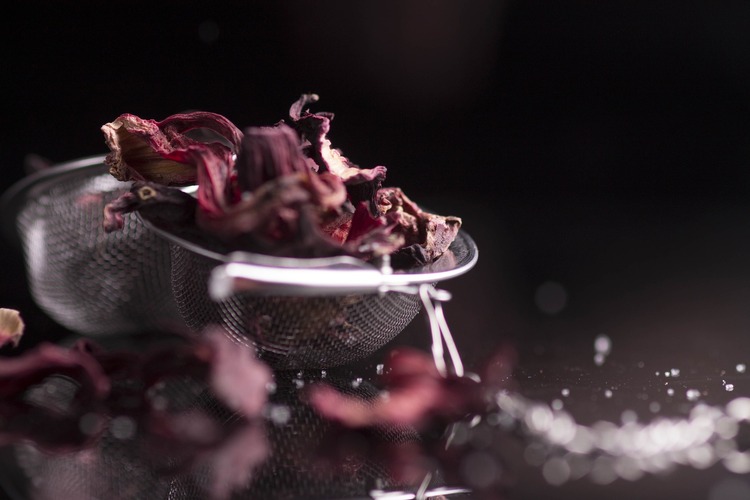
What is Hibiscus Tea?
History
Hibiscus tea has a long history, with evidence of its consumption dating back to ancient Egypt. The tea is made from the dried calyces of the hibiscus flower, which are the protective structures surrounding the flower’s reproductive organs.
The hibiscus flower is known as roselle or flor de Jamaica in some parts of the world. The tea made from the flower is known as sorrel, agua de Jamaica, karkade, bissap, zobo, or sobolo.
In ancient Egypt, hibiscus tea was consumed for its medicinal properties, including its ability to lower body temperature and soothe sore throats. The tea was also used as a natural diuretic to treat heart disease.
Today, hibiscus tea is a popular beverage in many parts of the world, including Mexico, Central America, the Caribbean, and parts of Africa. It is often served cold in Mexico with a splash of lime juice and a sprinkle of salt.
Herbal Tea
Hibiscus tea is a type of herbal tea, which means it is made from plant material rather than tea leaves. Herbal teas are often consumed for their medicinal properties, as well as their unique flavors and aromas. The other positive is that herbal teas are caffeine-free.
Dried Hibiscus Flowers
To make hibiscus tea, you will need dried hibiscus flowers. These can be found at many health food stores and online retailers. When purchasing dried hibiscus flowers, look for ones that are deep red and have a sweet, fruity aroma.
And, to make things clear, hibiscus tea is made from Hibiscus sabdariffa. It is NOT made from Hibiscus Rosa- Sinensis, the flower shown below.
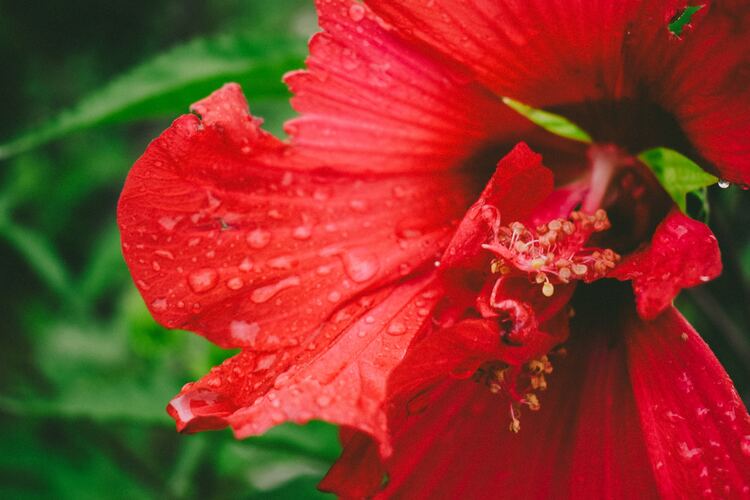
What Does Hibiscus Tea Taste Like?
If you’ve never tried hibiscus tea before, you might wonder what it tastes like. We deconstruct the flavor profile below.
- Tartness: Hibiscus tea is known for its pronounced tartness, often described as similar to cranberry or sour cherry. The tartness is a result of the natural acidity of the hibiscus plant.
- Fruity: Alongside its tartness, hibiscus tea also has fruity undertones. The flavor can be reminiscent of berry notes, particularly raspberry or blackberry. This fruity aspect adds a pleasant sweetness to the tea.
- Citrusy: Some people also detect citrusy notes in hibiscus tea, akin to lemon or grapefruit.
- Floral: Hibiscus tea can have subtle floral undertones, contributing to its aromatic profile. However, the floral notes are usually secondary to the tart and fruity flavors.
- Slightly Herbal: There may be a mild herbal quality to hibiscus tea, which adds depth to its flavor but is not overpowering.
- Bright and Vibrant: The combination of tartness, fruitiness, and a touch of floral and herbal notes gives hibiscus tea a bright and vibrant flavor.
- Naturally Sweet: While hibiscus tea is tart, its natural sweetness becomes more pronounced when brewed, and the flavors are balanced. Many people enjoy it without adding sweeteners, but it can be sweetened to taste if desired.
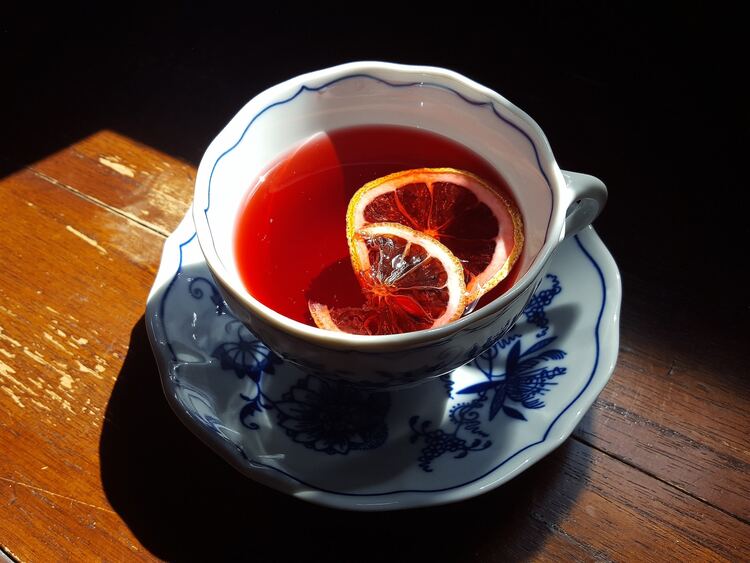
How to Make Hibiscus Tea
If you want to try hibiscus tea, you may wonder how to make it. Fortunately, it’s a relatively simple process that you can do at home with just a few ingredients.
Brewing Method
You’ll need to start by boiling water. Once the water is boiling, add your hibiscus flowers or tea bags to the pot. You can use fresh hibiscus or dried flowers, available at many health food stores and tea shops.
Steeping Time
Let the mixture steep for several minutes after adding the hibiscus flowers to the boiling water. The exact steeping time can vary depending on your taste preferences and the strength of your tea. In general, a steeping time of 5-10 minutes is recommended. Strain the flowers out and serve.
Iced Tea
Hibiscus tea is also an excellent choice for making iced tea. Simply brew the tea described above and let it cool before adding ice. Add fresh fruit or herbs to the tea for a more complex flavor profile.
Sweeteners and Additions for Hibiscus Tea
To enhance the flavor of hibiscus tea, you may want to add some sweeteners or other ingredients. Here are some popular options:
Sweeteners
Hibiscus tea has a tart flavor, so adding a sweetener can balance out the taste. Here are some sweeteners that you can add to your beverage:
- Honey: Honey is a natural sweetener that goes well with floral teas. It can also provide some additional health benefits.
- Sugar: To sweeten it, add sugar to your hibiscus tea. However, adding too much sugar can make the tea overly sweet.
- Stevia: Stevia is a natural sweetener that can be used as a sugar substitute. It is low in calories and has a sweet taste.
Mint
Adding mint to hibiscus tea can provide a refreshing and cooling effect. Here are some ways you can add mint to your tea:
- Fresh mint leaves: You can add them to your hibiscus tea to give it a fresh and minty taste.
- Peppermint extract: If you don’t have fresh mint leaves, add some peppermint extract to get the same effect.
Lemon
Adding lemon to hibiscus tea can provide a citrusy flavor and aroma. Here are some ways you can add lemon to your tea:
- Lemon juice: You can add some freshly squeezed lemon juice to give the tea a tangy taste.
- Lemon slices: You can add some lemon slices to give the tea a citrusy aroma.
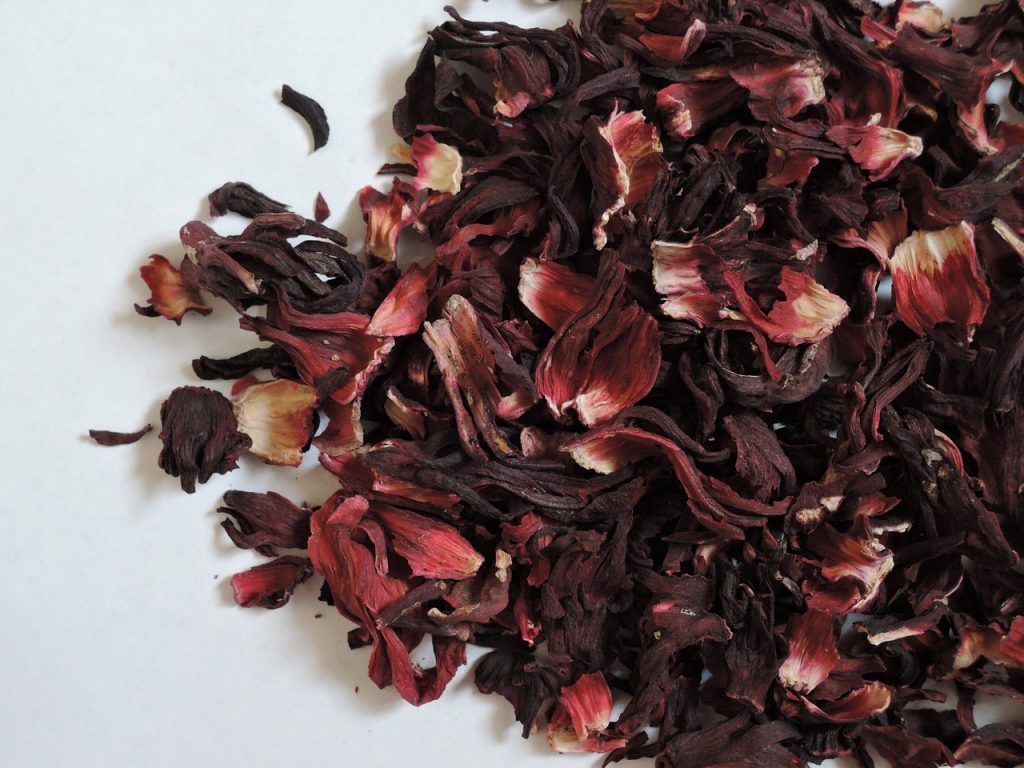
How to Make Agua de Jamaica
Since I live in Los Angeles, it is appropriate for me to share an agua de jamaica recipe. This is pretty similar to making iced hibiscus tea.
Ingredients
- 1 cup dried hibiscus flowers (also known as jamaica flowers)
- 4 cups water
- 1/2 cup granulated sugar (adjust to taste)
- Ice cubes
- Optional: lime wedges or mint leaves for garnish
Instructions
- In a medium-sized saucepan, bring the water to a boil.
- Remove the saucepan from heat and add the dried hibiscus flowers to the hot water. Let it steep for about 15-20 minutes, allowing the flowers to infuse the water and create a vibrant red color.
- Strain the liquid into a pitcher, discarding the hibiscus flowers.
- Stir in the granulated sugar until it dissolves completely. You can adjust the amount of sugar according to your preference for sweetness.
- Let the agua de jamaica cool to room temperature, and then refrigerate it until chilled.
- Once chilled, serve the agua de jamaica over ice cubes in glasses.
- Optionally, garnish each glass with a lime wedge or a few mint leaves for added freshness.
- Stir before drinking, and enjoy your homemade agua de jamaica!
Remember, you can always adjust the sweetness or dilution by adding more water or sugar to suit your taste preferences.
Hibiscus Tea Blends
If you want to add variety to your hibiscus tea, try blending it with other teas and ingredients. Or, you can buy a pre-packaged blend. Here are a few ideas to get you started:
Hibiscus and Ginger
Ginger adds a spicy kick to the floral notes of hibiscus. Brew a cup of hibiscus tea and add a slice of fresh ginger or a pinch of ground ginger for a warming and comforting drink.
Hibiscus and Green Tea
Green tea is an excellent complement to hibiscus, adding a subtle grassy flavor and a boost of antioxidants. Brew a cup of green tea and add a hibiscus tea bag for a healthy and delicious blend.
Hibiscus and Berries
Combining hibiscus with berries such as strawberries, raspberries, or blueberries adds a touch of sweetness and fruity flavors to the tea. The berries’ natural sweetness complements hibiscus’s tartness, resulting in a flavorful and balanced blend.
Hibiscus and Spices
Adding spices like cinnamon, cloves, or cardamom to hibiscus tea creates a warming and aromatic blend. The spices impart a cozy and exotic flavor profile that complements hibiscus’s floral and tart notes.
Hibiscus and Lavender
Mixing hibiscus and lavender creates a delightful blend that combines the vibrant tartness of hibiscus with the delicate floral aroma of lavender. This combination results in a soothing, aromatic tea that offers a refreshing sensory experience.
Experiment with different blends and find the perfect combination for your taste buds. Enjoy!
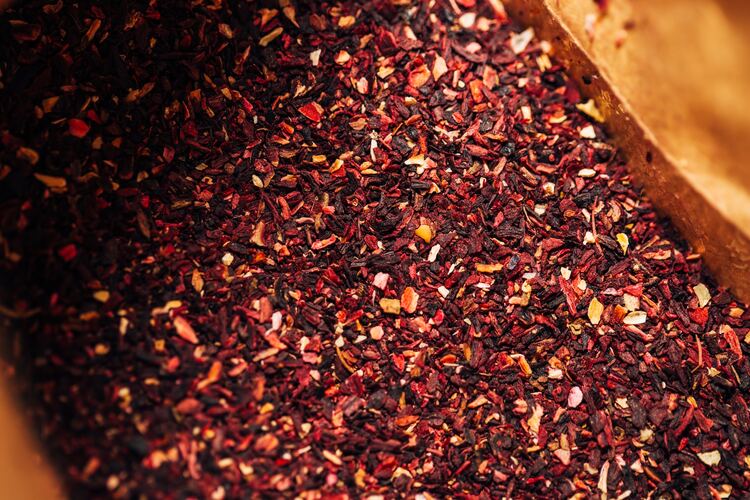
Health Benefits of Hibiscus Tea
If you’re looking for a refreshing and healthy beverage, hibiscus tea is an excellent choice. Here are some of its many health benefits.
- Blood Pressure and Cholesterol: Hibiscus tea has been shown to affect blood pressure and cholesterol levels positively. Studies have found that drinking hibiscus tea can lower both systolic and diastolic blood pressure and reduce LDL cholesterol levels.
- Antioxidants and Nutrients: This tea contains antioxidants and nutrients, including vitamin C, iron, and zinc. These antioxidants help to protect your body from oxidative stress, which can lead to chronic diseases such as cancer and heart disease.
- Liver Health: The antioxidants in hibiscus tea can also help to improve liver health. Studies have found that hibiscus tea can help to reduce liver damage and improve liver function.
- Diabetes: Hibiscus tea may also be beneficial for those with diabetes. Studies have found that this tea can help to reduce blood sugar levels and improve insulin resistance.
- Cancer and Inflammation: The antioxidants in hibiscus tea may also help to reduce the risk of cancer and inflammation. Studies have found that this tea can help to reduce oxidative stress and inflammation in the body.
- Antibacterial Properties – Also, hibiscus tea has antibacterial properties that can help prevent the growth of harmful bacteria in the body. This can help to reduce the risk of infections and improve overall health.
Buying Recommendations
Well, well, it is time to grab some bags of dried hibiscus petals to prepare our tea (or agua de jamaica, or kombucha, yes, I make kombucha out of it). Here are our top recommendations:

The Republic of Tea Natural Hibiscus Superflower Tea

Stash Tea Tea Wild Raspberry Hibiscus

USDA Organic Purple Hibiscus Butterfly Pea Flower Tea Bag

Hibiscus tea is a versatile and delicious beverage that can be enjoyed in many ways. I hope you enjoy this tea as much as we do!
To you, what does hibiscus tea taste like?
More About Floral Teas
What Does Rose Tea Taste Like?
What Does Rose Milk Tea Taste Like?
What Does Lavender Tea Taste Like?
What Does Lavender Milk Tea Taste Like?
What Does Chrysanthemum Tea Taste Like?
What Does Mullein Tea Taste Like?
What Does Red Clover Tea Taste Like?
What Does Osmanthus Tea Taste Like?